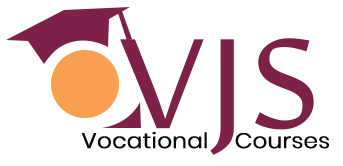Training For PRP Therapy
PRP Training Vizag, RP Certificate Program Diploma & Course Andhra Pradesh, Vjs Vocational Courses offer the students a PRP therapy course. For any healthcare provider or the students, it is essential to understand the PRP training course to provide improved healing methods to patients. Here we will let you know everything about the treatment.
Basics of PRP
PRP stands for Platelet-Rich Plasma therapy. It is categorized as one of the emerging technologies for aesthetic and medical applications. The demand for PRP increased with the need for sports as the athletes are more suspected of injuries.
Through our training program will help you understand the various reasons where the treatment can benefit the patients. It includes:
| Dermatologists | PRP facelift or micro-needling instructions |
| Dentist | Platelet-rich fibrin |
| Plastic surgeon | Nose job or rhinoplasty |
| Orthopedic surgeon | PRP injection |
| Trichologists | Hair loss |
PRP Device & processing of PRP
PRP (Platelet Rich Plasma) is concentrated from the blood which contains bioactive proteins and white blood cells (which are the healing factors). It is also termed as:
- Stem cell markers
- Growth factors
Through PRP the platelets power is increased. This is done through collection and concentration of platelets in a single infection. The injured part of the body is benefited up to 5 times. Most importantly, the blood is taken from the patient’s body so it reduces the risk of contamination, infection, mismatch, or any problem of rejection.
What is the PRP process?
PRP therapy is a simple process that is carried out in 2 hours. The patient does not have to be hospitalized and it is an outpatient procedure.
Before treatment instructions
- A blood test is needed, so the patient cannot drink or eat for at least 12 hours before the procedure. Along with that, patients need to keep themselves hydrated because it allows the blood extraction process to be easier. Apart from that, no special preparation is needed for PRP.
- Medications like motrin or aleve, need to be stopped before PRP therapy as they can possibly affect the results.
Steps included in PRP
| Step 1: Extraction of patient’s blood | Between 15 to 50 milliliters of blood is needed. The needle is inserted into the arm vein and then the blood is drawn in a vial. |
| Step 2: Centrifuge the blood | Centrifuge device spins at high speed which separates the liquids and solids. It means the following are separated:
|
| Step 3: Process and collect the platelets | Normally, the platelets are 200,000 per milliliter. But with PRP these are more than 5 times. The needed amount will be collected in a syringe and then administered right away. |
| Step 4 : Inject the PRP into the desired site | In the final step, around 1 to 2 teaspoons of fluid are collected. PRP is guided with the use of an ultrasound probe. Depending on the nature of the injury and proper location will be treated. |
Single spin & double spin method
Double spin methods are a reliable choice to yield highly concentrated PRP. Apart from that, the single spin design will result in fewer platelets.
- Principles of Single Spin PRP Kits : With single-spin kits, the soluble polymer stratifies blood elements. With centrifugation, the physical burial is created which helps the red blood cells to get isolated. Once the red blood cells are removed it helps in reducing the inflammatory response. Although it results in the production of serum which is less than the whole blood and is referred to as platelet-poor plasma.
- Principles of Dual Spin PRP Kits : Dual spin centrifugation helps in stratifying the blood elements and platelets more than 6.7 times. The spinning is done depending on the need and the resulting elements are collected for the second spin. The second spin helps the plasma to come out of the solution and then they will make PRP highly concentrated.
Functions of PRP
PRP extraction is done from blood with a centrifuge-like mechanism which helps in separating the substance from blood and increases the concentration of proteins which results in healing. It is a potential treatment for improved looks, osteoarthritis, tendon injuries, and androgenetic alopecia.
Use of PRP in hair restoration therapy
The PRP is injected into the scalp on the problematic area and then through micro-needling small holes are made which helps the PRP to be injected into the base of hair follicles. The patient needs to be given 3 treatments which are in the time gap of one month. The hair growth will be seen within 12 to 24 months and to maintain the hair additional treatment is recommended. Each of the sessions takes 30 minutes to complete and the patient is administered general anesthesia.
1 Week Certification course with Affiliation to Govt. of India
Our instructors provide the 1-week certification course for PRP. The course is divided into clinical and theory sessions. All the treatment protocols are considered and students who meet the necessary criteria will get the certification on course completion.
Success Story



